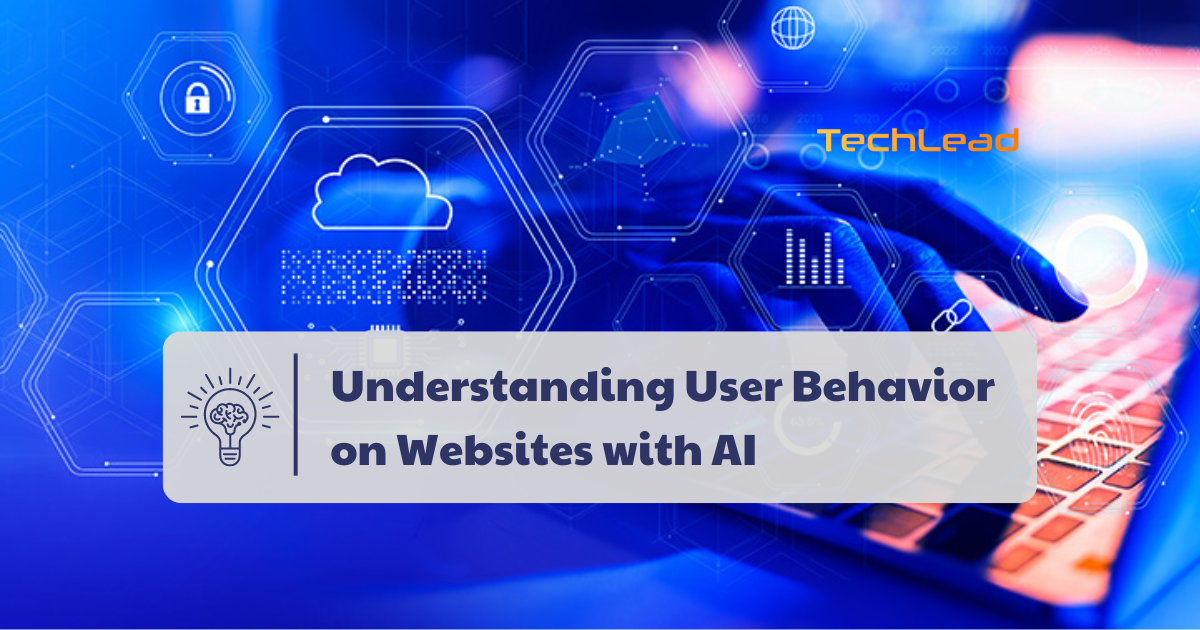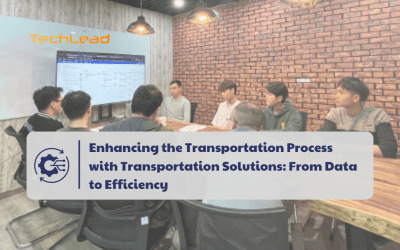In the digital era, businesses are increasingly reliant on data-driven insights to optimize user experience and drive conversions on their websites. With the emergence of Artificial Intelligence (AI), analyzing user behavior has evolved from basic metrics to advanced predictive analytics and real-time personalization.
AI-powered Data Collection and Analysis
In the realm of digital marketing and user experience optimization, AI-powered data collection and analysis have become indispensable tools for businesses aiming to understand and predict user behavior effectively. Here’s how AI transforms the process:
1. Enhanced Data Collection Efficiency
AI algorithms excel at gathering and processing vast amounts of data from various sources in real-time. Unlike traditional methods that rely on manual input and structured data, it can ingest and analyze unstructured data such as user interactions, social media posts, and customer feedback. This capability allows businesses to obtain a comprehensive view of user behavior across different platforms and touchpoints.
2. Advanced Behavioral Analytics
AI enhances traditional analytics by providing deeper insights into user behavior patterns. Machine learning algorithms can detect subtle trends and correlations within data that may not be apparent through conventional analysis. For instance, it can identify complex browsing patterns, preferences, and purchasing behaviors, enabling businesses to segment their audience more effectively and tailor marketing strategies accordingly.
3. Predictive Capabilities
One of the most powerful applications of AI in data analysis is predictive analytics. By analyzing historical data and ongoing trends, AI algorithms can forecast future user behavior and preferences with a high degree of accuracy. This predictive capability enables businesses to anticipate customer needs, optimize inventory management, personalize marketing campaigns, and improve overall operational efficiency.
4. Real-Time Decision Making
AI empowers businesses to make real-time decisions based on up-to-date insights. By continuously monitoring and analyzing data streams, AI systems can alert marketers to emerging trends, sudden changes in user behavior, or potential issues that require immediate attention. This proactive approach enables businesses to seize opportunities quickly and mitigate risks effectively.
5. Personalization and Customer Experience
AI-driven data analysis enables personalized customer experiences at scale. By understanding individual preferences and behaviors, businesses can deliver targeted recommendations, content, and offers that resonate with each customer. This personalized approach enhances customer satisfaction, increases engagement, and ultimately boosts conversion rates.
6. Ethical Considerations and Data Privacy
While AI offers powerful capabilities in data collection and analysis, businesses must prioritize ethical considerations and data privacy. Transparent data practices, informed consent, and compliance with regulations such as GDPR are crucial to maintaining trust and protecting user information.
In conclusion, AI-powered data collection and analysis revolutionize how businesses understand and engage with their customers. By leveraging advanced algorithms for efficient data processing, insightful analytics, predictive modeling, and real-time decision-making, businesses can gain a competitive edge in today’s data-driven marketplace while respecting ethical guidelines and safeguarding user privacy.
Predictive Analytics for Enhanced User Insights
In the digital age, businesses are increasingly leveraging predictive analytics powered by Artificial Intelligence (AI) to gain deeper insights into user behavior and preferences. Predictive analytics goes beyond traditional data analysis by forecasting future trends and behaviors based on historical data patterns. Here’s how it enhances user insights:
1. Forecasting Customer Behavior
Predictive analytics uses machine learning algorithms to analyze large datasets and identify patterns in user behavior. By examining past interactions, purchases, and engagement metrics, AI can predict future actions such as potential purchases, churn rates, or preferred content types. This forecasting capability allows businesses to proactively tailor their marketing strategies and customer experiences.
2. Personalized Recommendations
AI-driven predictive models enable businesses to deliver personalized recommendations to users. By understanding individual preferences and interests, algorithms can suggest relevant products, services, or content that are likely to resonate with each user. This personalized approach enhances user engagement, increases conversion rates, and fosters customer loyalty.
3. Optimization of Marketing Campaigns
Predictive analytics helps optimize marketing campaigns by identifying the most effective channels, messaging strategies, and timing for outreach. AI algorithms can analyze data to determine which segments of the audience are most likely to respond positively to specific campaigns. This insights-driven approach ensures that marketing efforts are targeted and yield maximum ROI.
4. Customer Lifetime Value Prediction
AI-powered predictive analytics can estimate the potential lifetime value of customers based on their behavior and interactions with the business. By calculating factors such as average order value, frequency of purchases, and retention rates, businesses can prioritize customer acquisition and retention strategies effectively. This strategic insight allows businesses to allocate resources efficiently and focus on high-value customers.
5. Risk Assessment and Fraud Detection
Predictive analytics also plays a crucial role in risk assessment and fraud detection. AI algorithms analyze transactional data and user behavior patterns to detect anomalies or suspicious activities in real-time. This proactive approach helps businesses mitigate risks, prevent fraud, and safeguard user information and financial transactions.
6. Continuous Improvement and Adaptation
One of the key advantages of predictive analytics is its ability to learn and adapt over time. As new data becomes available and user behaviors evolve, AI models can be updated to refine predictions and improve accuracy. This iterative process ensures that businesses stay responsive to changing market dynamics and customer preferences.
AI enables websites to dynamically adjust content and layout based on real-time user interactions. For instance, AI-powered systems can modify product recommendations or adjust pricing displays based on user behavior during their current session. This level of real-time personalization creates a more engaging and relevant experience for users, increasing the likelihood of conversion.
Furthermore, AI can optimize website performance by identifying areas where users commonly encounter friction or drop-off points. By analyzing patterns in user behavior, AI helps businesses streamline the user journey, leading to improved usability and higher retention rates.
Ethical Considerations and Transparency
As businesses increasingly rely on predictive analytics powered by Artificial Intelligence (AI) to understand user behavior and drive decision-making, it is essential to address ethical considerations and ensure transparency in how data is collected, analyzed, and used. Here are key aspects to consider:
1. Data Privacy and Security
Respecting user privacy is paramount in the use of predictive analytics. Businesses must ensure that data collection practices are transparent, and users are informed about how their data will be used. Compliance with data protection regulations such as GDPR (General Data Protection Regulation) or CCPA (California Consumer Privacy Act) is crucial in safeguarding personal information.
2. Bias and Fairness
AI algorithms used in predictive analytics can inadvertently perpetuate biases present in training data, leading to unfair or discriminatory outcomes. It is essential to regularly audit AI models for bias and take measures to mitigate biases in data collection, algorithm design, and decision-making processes. Ensuring diversity in data sources and involving diverse teams in AI development can help address biases effectively.
3. Explainability and Accountability
AI models used for predictive analytics should be explainable and understandable to stakeholders, including users affected by automated decisions. Businesses should strive to provide transparency in how predictions are made, the factors considered, and the implications for users. Establishing accountability mechanisms ensures that decisions based on AI insights are traceable and accountable.
4. Consent and User Control
Obtaining informed consent from users before collecting and using their data for predictive analytics is crucial. Users should have clear options to opt-in or opt-out of data collection and understand the implications of their choices. Providing users with control over their data empowers them and builds trust in the business’s ethical practices.
5. Human Oversight and Decision-Making
While AI enhances decision-making through predictive analytics, human oversight remains essential. Businesses should ensure that AI-driven insights complement human judgment rather than replace it entirely. Human intervention is necessary to interpret results, validate findings, and make ethical decisions based on broader societal and ethical considerations.
6. Continuous Monitoring and Adaptation
Ethical considerations in predictive analytics are dynamic and require continuous monitoring and adaptation. Businesses should regularly review their AI models, update them with new data, and refine algorithms to improve accuracy and fairness. Transparency in these processes fosters trust among users and stakeholders.
In conclusion, integrating ethical considerations and ensuring transparency in predictive analytics is essential for building trust, mitigating risks, and maximizing the benefits of AI-driven insights. By prioritizing data privacy, addressing biases, promoting explainability, respecting user consent, maintaining human oversight, and adapting to evolving ethical standards, businesses can harness the power of predictive analytics responsibly and ethically in today’s digital landscape.
Conclusion
AI revolutionizes the way businesses analyze and leverage user behavior on websites. By harnessing advanced data analytics and predictive capabilities, AI enables personalized experiences that drive engagement, conversions, and long-term customer loyalty. As AI continues to evolve, its impact on understanding and optimizing user behavior will remain pivotal in shaping the future of digital interactions.
Refer to information about User Behavior on Websites with AI here: https://hotel-webdesign.com/en/ai-enabled-user-behavior-analysis-for-better-web-design
Please contact TechLead so we can support you in Software Development to create the best solutions!
Contact Information: https://www.techlead.vn
TECHLEAD – Leading technology solution for you!
Hotline: 0372278262
Website: https://www.techlead.vn
Linkedin: https://www.linkedin.com/company/techlead-vn/
Email: [email protected]
Address: 4th Floor, No. 11, Nguyen Xien, Thanh Xuan, Hanoi





